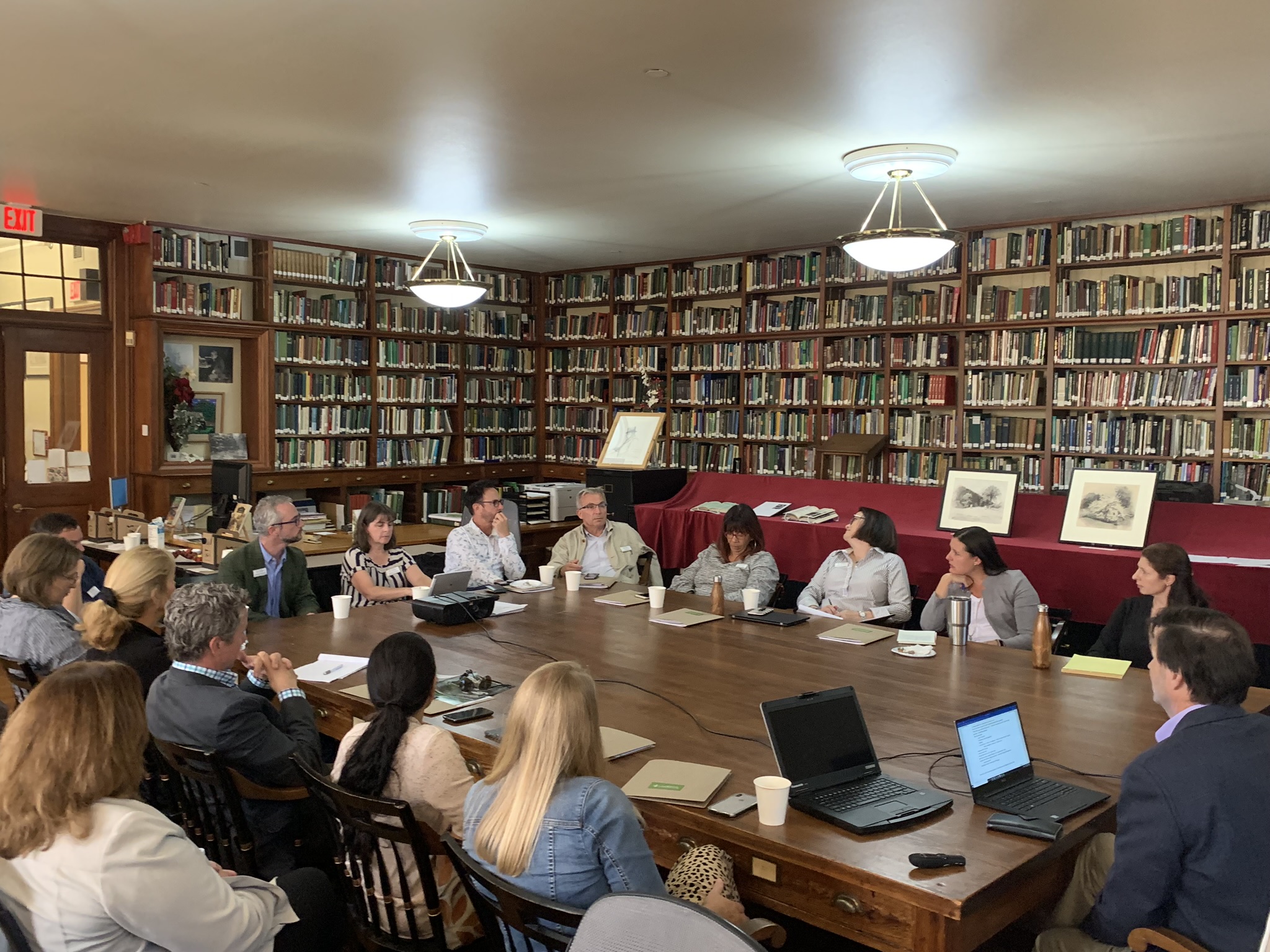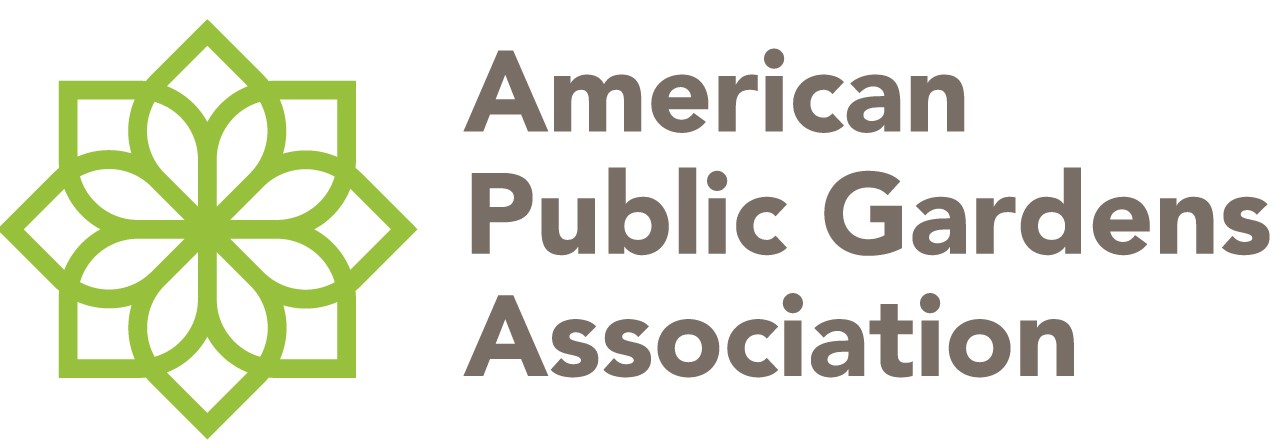
RFP: 2025 Strategic Planning Consultant
The Association is accepting proposals from individuals and firms to facilitate the development of the organization’s next Strategic Plan launching in January 2025. The successful applicant will facilitate a comprehensive planning process, engaging a wide variety of stakeholders including board members, staff, Association leaders and members, partners, and sponsors to create a robust Strategic Plan to guide the organization for the next three – five years. Learn more.
THE GARDEN I.D.E.A.L.
The Association’s 2024 Strategic Plan is the American Public Gardens Association’s most ambitious roadmap to date, and not a moment too soon.
Garden I.D.E.A.L. is a journey towards greatness we plan to take with you, our institutional, individual and industry partners, through 2024.
First created pre-Covid, the 2024 Strategic Plan was updated in early 2023 to determine what had been completed, what was underway, and what was simply no longer a priority for the Association in the current environment.
A new strategic planning process will get underway in 2024 for launch in 2025. Stay tuned for more information.
See below for the updated 2024 Strategic Plan.

Grow and nurture relationships with members by offering services and resources that anticipate and fulfill their needs.
Objective 1A
Attract and Engage Diverse Membership: Grow a healthy and diverse membership by attracting new members and nurturing existing ones.
- Develop a membership value proposition for each membership level that communicates the value of an APGA membership used to acquire and retain members. The membership value proposition should:
- Engage new and current members.
- Express the value of an APGA membership. “Why being a member matters.”
- Enhance benefit messaging.
- Implement retention, acquisition, and lapsed membership campaigns through multiple communication and solicitation channels:
- Review historical data to establish realistic growth targets for all membership categories.
- Embed value proposition in all channels of solicitation communication to convey the ROI of an APGA membership related to member needs and outcomes.
- Establish and execute an annual cultivation, communication, and solicitation calendar for membership acquisition.
- Develop a Membership Committee to serve as advisors for the membership program.
- Create stewardship opportunities to ensure members use benefits and engage with the Association.
- Research Entry Level Membership programs offered at similar associations and benchmark those programs with the APGA program. Develop a proposal to be presented to the APGA board in FY25 that will provide a detailed plan to revamp the Entry Level Membership program prices and benefits that will be approved by the Board of Directors.
- Benchmark other organizations to expand awards and recognition programs to increase member engagement and help build pride, standing and confidence among member gardens and individuals.
Objective 1B
Evaluate member benefits to identify opportunities to grow the program and enhance communication of benefits offered.
- Research and benchmark against peer organizations to identify other member benefits/resources.
- Develop and execute membership survey to:
- Understand what an APGA membership means to members.
- Learn what benefits and resources members are looking for.
- Understand what members already know and what they need to learn about membership benefits/resources with APGA.
- Learn how members would like to receive communications from the Association.
- Membership team to schedule and plan annual Lunch & Learn series to create awareness of member benefits.
Objective 1C
Better integrate Association Programs into general communications.
- Develop collective metrics for collaborative program impacts.
- Analyze and increase consistency of existing messages and communication about programs; to Create new synergistic messages that resonate with members.
Objective 1D
Cultivate Strategic Partners: Cultivate and strengthen innovative strategic partnerships and other relationships to advance the Association and its members.
- Define strategic partnerships criteria, guidelines and goals.
- Identify and pursue opportunities to partner with peer national and international groups.
Offer quality educational resources and exemplary professional development opportunities to a diverse membership.
Objective 2A
Expand Access: Expand and create diverse delivery channels to Professional Development programs and resources that further members’ professional development.
- Identify content gaps that key programs could uniquely and critically fill.
- Strengthen Library and Media Center offerings by first benchmarking and then developing an outlined and systemized approach to procurement and categorization of resources.
- Provide free-to-member career specific professional development webinars and resources through Specialty Sponsorships.
Objective 2B
Utilize and Create Professional Development Opportunities That Promote Industry Talent to Future Leadership Roles
- Benchmark and develop Leadership Summit for Executive Garden Leaders by 2024 Conference using existing Community Symposium framework.
- Identify new ways to engage participants through exploration of a Conference Buddy program or other mentoring opportunities.
- Identify, organize, and promote resources specific to career stages at every level.
- Research and benchmark professional association Certificate Courses for fiscal and mission alignment.
Objective 2C
Promote Connections: Provide suite of opportunities for diverse members to engage, serve, and build professional relationships.
- Develop and implement a system for compiling and tracking regional and other garden collaborations.
- Benchmark professional community structure, roles, and community managers against other professional associations and, based on findings, update professional community handbook and implement workplan.
Lead the promotion of public gardens as cornerstones for resilient, healthy communities. Build capacity and enhance the ability to extol how their work provides solutions to local and global challenges.
Objective 3A
Build Resilience: Galvanize gardens to proactively build and sustain resilience while navigating change.
- Implement the next phase of Disaster Readiness Initiative, connecting gardens to a peer support network through hosting 6 regional workshops by the end of 2024.
- Provide tools that help gardens use mission-balanced, sustainable approaches to achieve financial stability and maintain community relevancy against inevitable demographic, and/or market-driven changes.
- Facilitate methods for gardens to safeguard and proactively plan for the long-term health of their plant collections.
- Continue Urban Agriculture Resilience Program partnership with the United States Botanic Garden to provide annual awards that support public gardens in facilitating collaborative urban agriculture, community gardening, and other food-growing programs.
Objective 3B
Foster the Value of Public Gardens: Benchmark, articulate, and advocate the value of public gardens as an influential voice for the industry. Continue to enhance the Association’s outward communications to fulfill its mission and vision.
- Articulate and position the external voice of the Association and public gardens by developing an advocacy program.
- Through benchmarking platform, develop collective impact survey and benchmarking reports for Association and member use.
- Develop communication reference tools which give Association members specific talking points about the role and value of public gardens and customizable messages for their individual needs.
- Evolve website to promote value of Association and public gardens externally to both existing and potential stakeholders.
- Research peer organization processes of certification and other avenues of recognition
Continue pursuit of organizational excellence and a business model that promotes sustainability, resilience, and core IDEA (inclusion, diversity, equity, and access) principles.
Objective 4A
Increase Financial Strength: Diversify and increase funding while seeking efficiencies and building financial reserves to ensure organizational sustainability.
- Develop an organizational growth plan to support and aligns with strategic plan by 2025 to include:
- draft menu of gift opportunities and policies for acceptance and recognition – pending identify efficiencies etc.
- Develop case statement for endowment fund.
- Grow cash reserves to cover 6 months of operational expenses.
- Significantly strengthen fundraising and development programs.
- Integrate fundraising management database solutions to manage activities.
Objective 4B
Foster Workplace Culture: Foster a positive workplace culture that values and develops its people and advances IDEA principles in all operations.
- Develop a staffing plan that includes an assessment of needs, resources, and gaps.
- Develop a strategic leadership development plan/succession planning framework.
- Develop an onboarding process.
Objective 4C
Enhance Governance: Follow best practices for board governance and succession to recruit, engage, and develop qualified, diverse board members that reflects the Association’s commitment to IDEA goals.
- Better leverage current board members and board alumni to support the organization’s fundraising, awareness, and advocacy efforts.
- Conduct a review of bylaws, committees, governance processes, and culture to maximize the highest and best use of volunteer leader time, resources, and talent to advance strategic organizational objectives and to model inclusive leadership.
Objective 4D
Improve Technology and Data: Ensure efficient use of technology in all operations.
- Improve our staff’s reach with members to provide more access to tools, resources and programs.
- Develop procedures to ensure data accuracy regarding member information.



